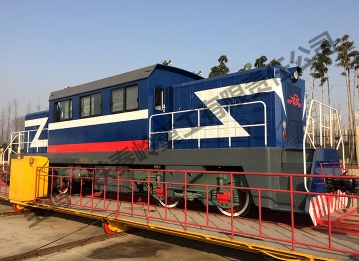In the use of diesel locomotive transmission forms are electric transmission, that is, through the high-power diesel engine driven generator power generation, electric energy through the rectifier and inverter output to the wheel shaft drive motor to drive the train forward. Here some people will ask: this kind of transmission is not a great loss of energy. The answer is yes, but only for two reasons:
One is that the traction mass of the train is generally several thousand tons, and the output torque of the diesel engine cannot drive such a weight without amplification. In the traditional automobile, the clutch and gearbox are used to realize torque amplification, while the train diesel engine has a displacement of 200-300 liters and an output power of about 3500 kw. The general gearbox cannot match such a high power, and the common clutch is also difficult to match such output torque, making the design very difficult.
Second, diesel engine as an internal combustion engine when the low speed torque is small, just like the car idling start is very difficult, a little resistance may cause "hold up the car" so that the internal combustion engine. So if the train USES mechanical transmission it is difficult to achieve a smooth start.

